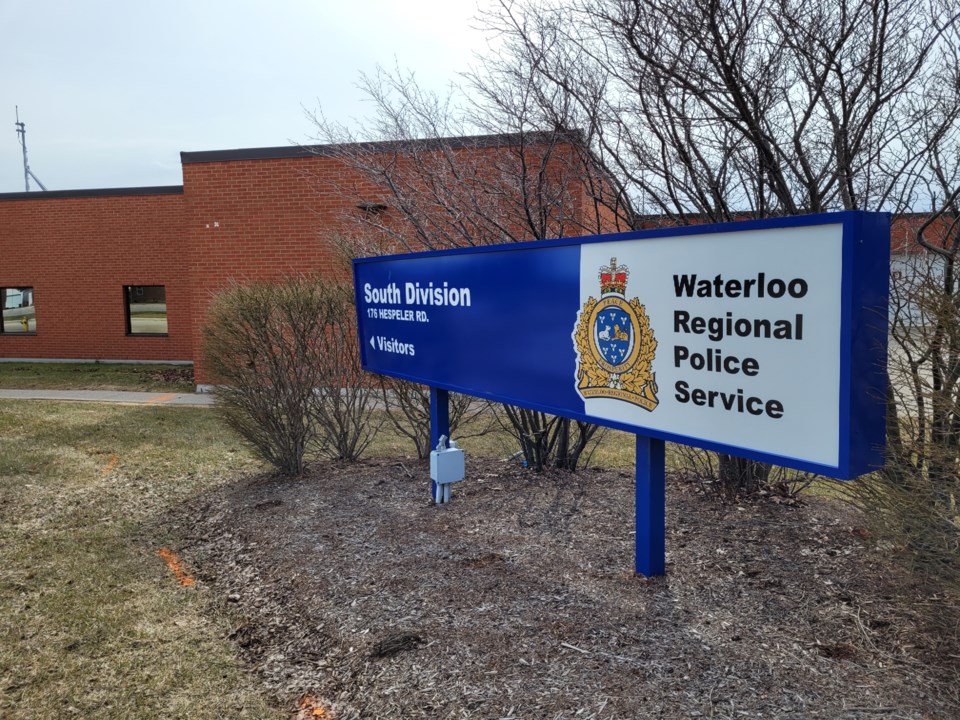A pilot project that deployed body-worn cameras and in-car cameras to Waterloo regional police officers will now become a permanent fixture after being approved at a police services board meeting last week.
From June 2021 to October 2022, Waterloo Regional Police Service (WRPS) initiated a large-scale Body-Worn Video (BWV) and In-Car Video (ICV) pilot as part of an overall modernization project.
Along with body-worn video and in-car video, the project also includes a mobile phone deployment strategy, and a digital evidence management system (DEMS).
There were 118 body worn videos deployed as part of the pilot project as well as 40 in-car videos.
With over 190 police service members, trained, the pilot's purpose was to determine the feasibility and capability of the technology capturing evidence while balancing privacy rights for citizens.
“Key performance indicators for the pilot focused on both member and community perceptions, administrative workload, and charge and conviction impacts,” said Shaena Morris, from the office of the superintendent at WRPS.
Overall objectives included the exploration of enhanced police accountability, accurate representation of police interactions with the public, enhanced public and officer safety, strengthened commitment to bias-free service delivery, and improved evidence for investigative, judicial, and oversight purposes.
Morris said that the pilot project included community consultation with a webinar, a general survey, and a direct invitation to cultural communities in the region.
“There is support in favouring a finalized a program for our police service. The community believes that this is a good financial investment, that this will improve transparency, and that the program will strengthen the commitment to bias free policing,” Morris said.
Morris said that the results, more importantly, show support for a permanent program in the region.
“In terms of building trust with the community, they feel this technology will help build on that” Morris said.
Police service members were also surveyed.
“They also believe it will enhance transparency with the community, that it will help protect them with public complaints, and will provide evidence for courts,” Morris said.
In June 2021, WRPS deployed 70 BWVs and 40 ICV systems within North Division and seven ICV systems to the Traffic Branch concurrently. Branches were selected based on existing divisional technology infrastructure and facility design to keep pilot costs to a minimum
Last week, the Waterloo Police Services Board approved the permanent In-Car Video (ICV) program by transitioning future ALPR units into front-line In-Car Video systems region-wide; and that a permanent Body-Worn Video (BWV) program with a staggered rollout over several years:
- 2022: Continued deployment of all current BWV systems
- 2023: Deploy BWV to all remaining front-line patrol members in North Division
- 2024: Deploy BWV to all front-line patrol members in South Division in Cambridge
- 2025: Deploy BWV to all front-line patrol members in Central Division
Transferring all future ALPR units into in-car video systems, region wide, comes at a cost of $160,000.
According to Morris, a permanent body worn video program with a staggered rollout over several years, from 2022-2025, would involve a slow movement of introducing the technology through each of the divisions, totalling 420 units, and with a capital cost of $644, 000.
WRPS received notification from the province that its portion of the ALPR grant funding will be $1,794,329.
This will afford the ability to install approximately 92 ALPR units into front-line patrol vehicles and operate them as ICV at full cost recovery.
WRPS Chief Mark Crowell said the service is taking a very prudent approach for this proposed deployment of body worn camera so that so can move slowly towards what will be a fully modernized future.
“Overall, the pilot delivered promising support in attaining the project objectives,” Morris said.
“The video technology is highly valued as an investment tool towards contributing to a transparent, effective, and professional policing community.”



